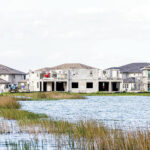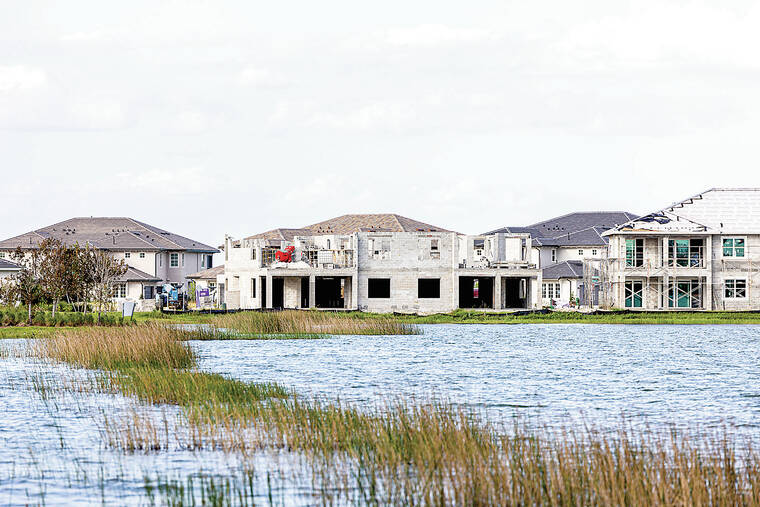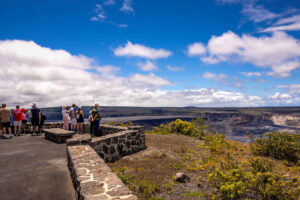A climate resistant community passed two hurricane tests


As Hurricane Milton rushed ashore last Wednesday, at least 2,000 Floridians found safe haven at Babcock Ranch, a community the size of Manhattan that opened in 2018 to withstand climate-driven storms.
Evacuees spread across two buildings designated as shelters by the Florida Division of Emergency Management: a K-12 school held about 400 people and a 40,000-square-foot sports facility housed about 1,600 more. Many fled from Fort Myers, a coastal city about 15 miles to the southwest, where some residents were under a mandatory evacuation order.
ADVERTISING
“When Gov. DeSantis made the announcement that Babcock Ranch was open we saw a very big surge in evacuees,” said Syd Kitson, the town’s co-founder who estimated that hundreds more evacuees sheltered in private homes of the town’s roughly 10,000 residents. “It saved a lot of lives in some really dangerous areas.”
All the structures at Babcock Ranch are built to withstand more than 150-mph hurricane force winds, and its 150-megawatt solar farms and underground transmission system mean the community rarely loses electricity. Roughly 90% of the property is preserved wetland that helps collect excess water and rarely floods. After Hurricane Milton, the town saw some downed trees and traffic lights, but never lost power.
“Mother Nature is going to rule every time,” Kitson said. “But what we try to do is mitigate as much of that risk as possible and make our community as resilient as we can.”
Babcock Ranch has built about a quarter of its 22,000 planned housing units along with two schools, parks and 6 million square feet of commercial space. It could serve as a model for how the state might become more resilient as climate change brings stronger hurricanes to Florida.
Building this way does not come cheap. While a representative for Babcock Ranch said up to 10% of its homes could potentially be set aside for affordable housing, home prices range from almost $300,000 to over $4 million. The average home price in Florida is almost $400,000, according to Zillow. Kitson said he plans to complete the community by 2035.
But such housing investments could save the state money in the long run. Much of Florida has been battered by the combination of hurricanes Helene and Milton, with a month and a half still left in the official hurricane season. Economic losses from the storms are in the tens of billions of dollars and some of the state’s largest insurance companies are fleeing.
“What we need is more communities to build with sustainability and climate resilience in mind,” Kitson said. “Only then will we see insurance providers change their algorithms to reflect the assurance that a town like Babcock Ranch provides.”
Hurricane Milton wasn’t the first test of the community’s resilience. Its enormous multipurpose facility, called the Field House, first held about 500 evacuees during Hurricane Ian, which passed over the community as a Category 4 storm in 2022. After Ian, communities surrounding Babcock Ranch saw roughly $115 billion in both insured and uninsured losses, but the town saw little damage, said Kitson, who like most community residents, stayed in his own home during the storm.
Similar neighborhoods that have been built to survive storms are more energy efficient, but even pricier. While 2.5 million people across Florida lost electricity during Milton, at Hunters Point, a housing development in Cortez, about 31 luxury homes stayed powered by a solar-battery system that lasted about four days after the storm. Hunters Point is only a fraction of the size of Babcock Ranch, and with oceanfront views, homes cost between $1.25 and $1.6 million.
“All around us there’s so much damage and debris and flooding,” said Marshall Gobuty, founder and president of Hunters Point, of the damage from Milton. “There’s no happiness, but there’s satisfaction that we did the right thing.”
Gobuty originally bought the property in the early 2000s with the intention to build an RV park. But then he partnered with the University of Central Florida and the U.S. Green Building Council to build a net zero home. The houses based on that model are now at Hunters Point, and solar panels have generated 35% more electricity than originally modeled. Gobuty plans to start construction on the 55 additional homes that will complete Hunters Point in February.
“We’re pioneers at this stage,” Gobuty said. “But this should be the norm for home building.”
But not every town can be built from the ground up and not every resident can afford a brand-new home. In Miami Beach, which sits on a barrier island off the coast of Miami, seven neighborhoods are being rebuilt as “living labs” for climate change, according to Amy Knowles, the city’s chief resilience officer and director of environment and sustainability. Four have been completed so far, with larger stormwater systems, pumps and elevated roadways.
Excessive rains from Hurricanes Helene and Milton caused some flooding in Miami Beach, but Knowles said it was minimized by storm drain management and sandbag distribution. So far, officials say, climate resiliency strategies have led to more than 450 days of avoided tidal flooding in the neighborhood of Sunset Harbour alone.
“We look for any opportunities we have to build resilience,” Knowles said. “We have to reduce risk now.”
This article originally appeared in The New York Times.
© 2024 The New York Times Company






